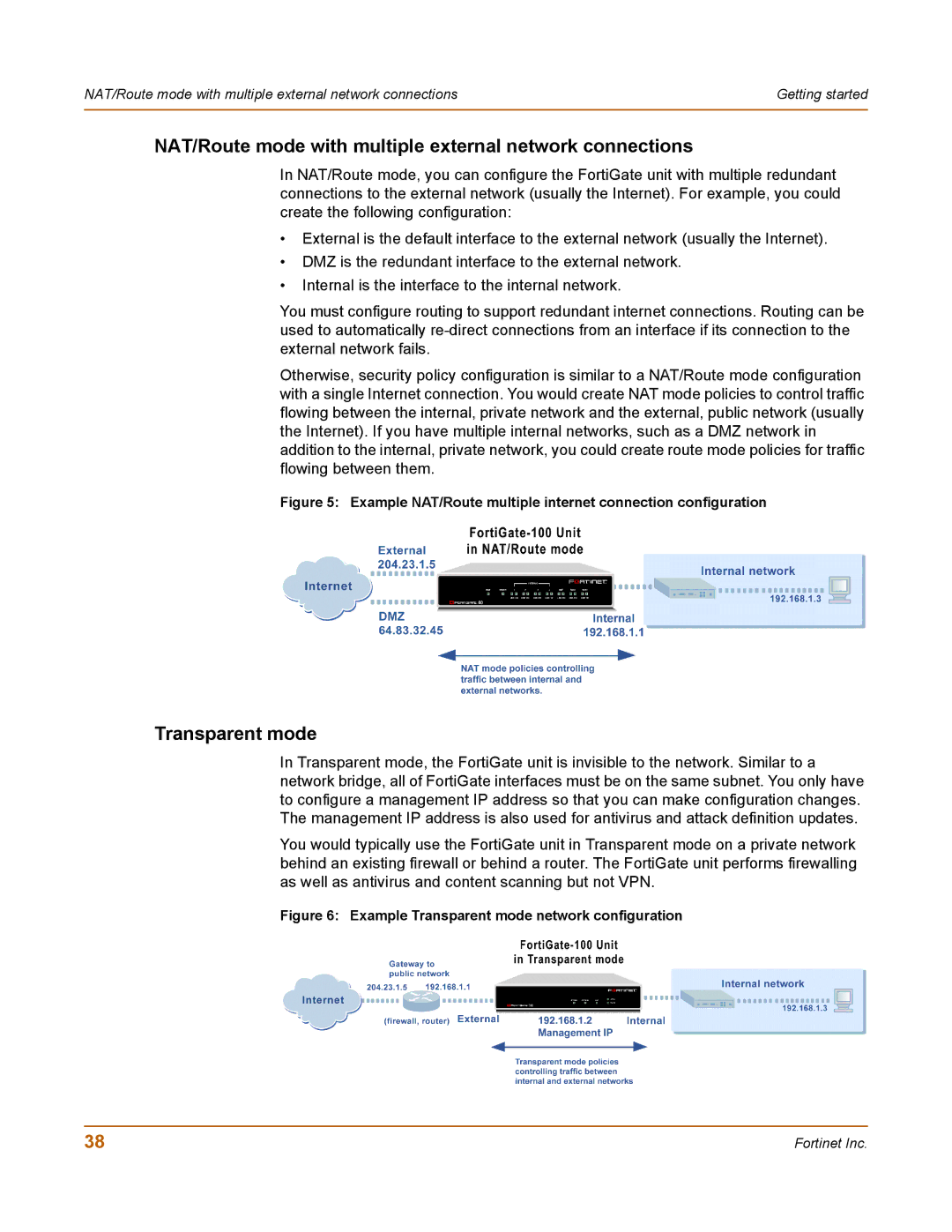
NAT/Route mode with multiple external network connections | Getting started |
|
|
NAT/Route mode with multiple external network connections
In NAT/Route mode, you can configure the FortiGate unit with multiple redundant connections to the external network (usually the Internet). For example, you could create the following configuration:
•External is the default interface to the external network (usually the Internet).
•DMZ is the redundant interface to the external network.
•Internal is the interface to the internal network.
You must configure routing to support redundant internet connections. Routing can be used to automatically
Otherwise, security policy configuration is similar to a NAT/Route mode configuration with a single Internet connection. You would create NAT mode policies to control traffic flowing between the internal, private network and the external, public network (usually the Internet). If you have multiple internal networks, such as a DMZ network in addition to the internal, private network, you could create route mode policies for traffic flowing between them.
Figure 5: Example NAT/Route multiple internet connection configuration
Transparent mode
In Transparent mode, the FortiGate unit is invisible to the network. Similar to a network bridge, all of FortiGate interfaces must be on the same subnet. You only have to configure a management IP address so that you can make configuration changes. The management IP address is also used for antivirus and attack definition updates.
You would typically use the FortiGate unit in Transparent mode on a private network behind an existing firewall or behind a router. The FortiGate unit performs firewalling as well as antivirus and content scanning but not VPN.
Figure 6: Example Transparent mode network configuration
38 | Fortinet Inc. |
